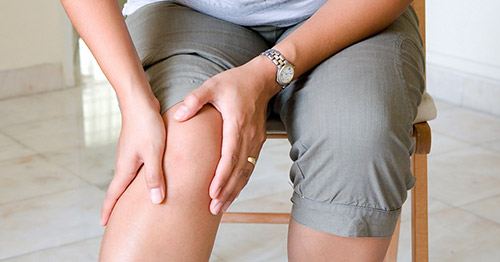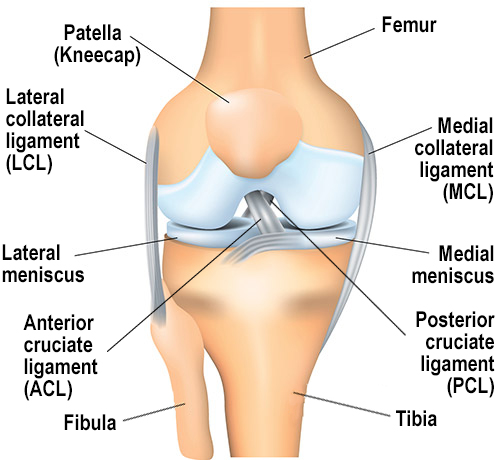Knee Pain, Injuries and Conditions
There are many injuries and diseases that cause knee pain, stiffness, instability or other problems. Explore the content below to learn more, or find the best doctor at HSS for your particular knee pain or mobility issue.

What kind of doctor should I see for knee pain?
Knee pain can arise from many injuries and conditions. The type of specialist you consult see may depend on several factors – most especially, whether or not you have had an acute injury, such as by twisting your knee during sports activity or experiencing an impact during a fall or other accident.
HSS offers a multidisciplinary approach to knee care. Our orthopedic surgeons and sports medicine doctors provide acute injury treatments that may be surgical or nonsurgical. For pain that arises when there has been no obvious injury, you may benefit from treatment by a physiatrist, rheumatologist or physical therapist.
Where to start
Each case is different, but here is some general guidance on finding the right doctor for your specific knee pain or condition.
- If you experienced a severe, acute injury such as one involving a motor vehicle or machinery, you should consult an orthopedic surgeon who specializes in trauma.
- If you have knee pain that began suddenly while you were running, jumping or falling during activity, you should meet with a sports medicine doctor. These specialists provide both nonsurgical and surgical treatment for sprains (ligament tears), fractures and other conditions.
- If your knee pain arose when there has been no obvious injury, you may want to first consult either a physiatrist or sports medicine doctor, who can assess your pain and may provide treatment themselves or, if appropriate, refer you to a physical therapist, orthopedic surgeon or rheumatologist. People of about 50 years of age or older who experience unexplained knee pain may opt first to consult with an orthopedic surgeon who specializes in osteoarthritis to see if they are a candidate for knee replacement.
Regardless of which specialist you consult first, an accurate diagnosis usually requires radiological imaging such as X-rays or MRIs), and this imaging should be reviewed by a radiologist with musculoskeletal expertise.
Anatomy of the knee
The knee is a complex joint formed where four bones meet. These are:
- the femur (thighbone)
- the patella (kneecap)
- the tibia (shinbone) – the larger long bone of the lower leg
- the fibula – the smaller long bone of the lower leg

Cushioning cartilage lines the spaces where these bones meet. These include the medial (inner) and lateral (outer) meniscus. These fibrous, disc-like cartilage bodies lie between the femur and the tibia to provide shock absorption and stability in the joint. Four ligaments help stabilize the joint:
- the anterior collateral ligament (ACL) at the front of the knee
- the posterior collateral ligament (PCL) at the rear of the knee, which intersects with the ACL
- the lateral collateral ligament on the outside of the knee
- the medial collateral ligament on the inside of the knee
To facilitate movement, several tendons connect the knee bones to the leg muscles. Of these, the quadriceps and patellar tendons are the most commonly affected by injury.
Knee animations library
Watch animation videos that illustrate and explain various knee conditions and injuries, including surgical treatments. (Each surgical animation provides only a general overview of a particular orthopedic procedure. HSS surgeons tailor each operation to the individual patient.)
Knee conditions and treatments
To learn more about specific knee injuries, conditions, surgical and nonsurgical treatments, explore the web pages below.
- ACL Surgery
- ACL Tear (Torn ACL)
- Avascular Necrosis (AVN, Osteonecrosis)
- Benign Bone Tumor
- Bone Diseases
- Bone Lesion
- Bowlegs
- Cartilage Injuries & Disorders
- Compound Fracture
- Discoid Meniscus
- Gout
- Growth Plate Fracture
- Iliotibial Band (IT Band) Syndrome
- Knee Arthritis
- Knee Arthroscopy
- Knee Replacement
- Knee Revision
- Kneecap (Patella) Injuries and Conditions
- Knock Knee
- MCL Tear / MCL Injury of the Knee
- Metastatic Bone Disease
- Osgood-Schlatter Disease
- Osseointegration Limb Replacement
- Osteochondritis Dissecans
- Osteosarcoma (Bone Cancer)
- Partial Knee Replacement
- Patellofemoral Disorders
- Posterior Cruciate Ligament (PCL) Injuries
- Psoriatic Arthritis
- Runner's Knee
- Synovitis
- Tendinosis
- Tendon Injuries and Conditions
- Tendon Ruptures
- Tendonitis / Tendinitis
- Torn Meniscus
- Viscosupplementation
Knee Pain, Injuries and Conditions Success Stories